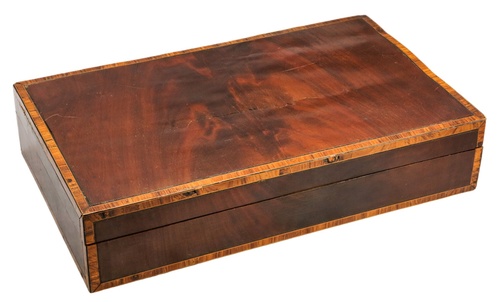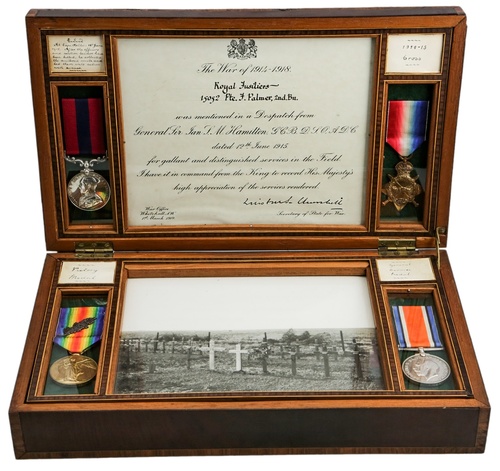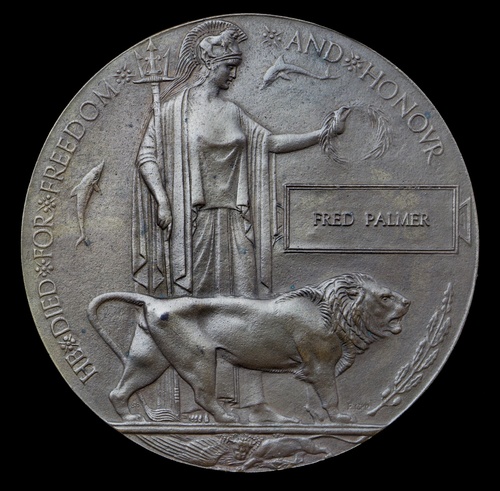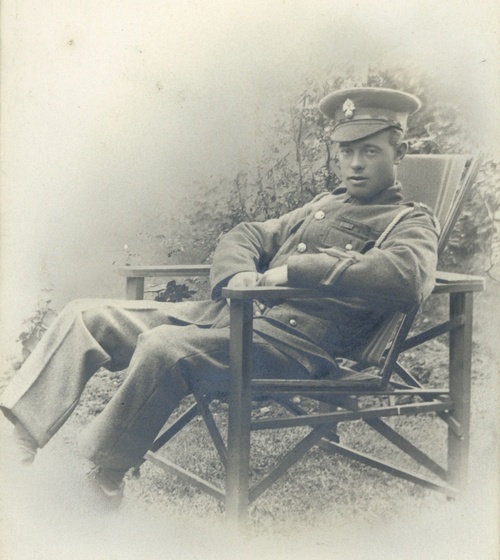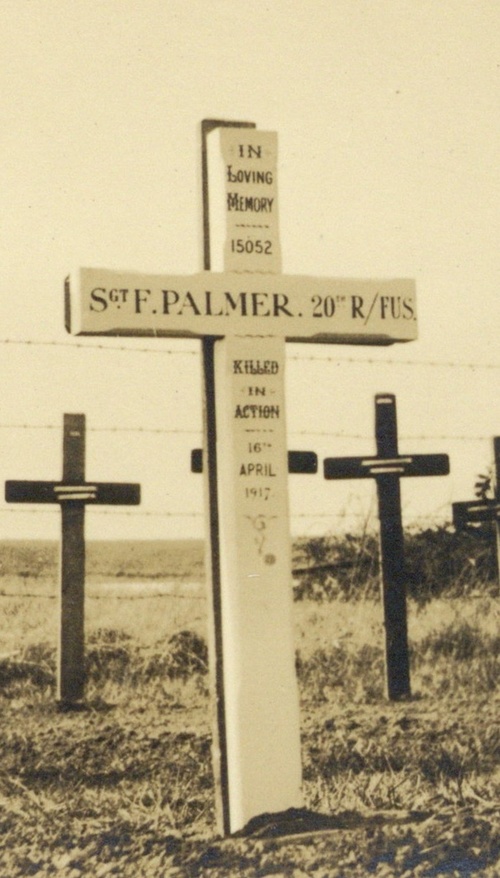Auction: 19003 - Orders, Decorations and Medals
Lot: 339
The outstanding 'Gallipoli Landings' D.C.M. group of four awarded to Sergeant F. Palmer, Royal Fusiliers, decorated and mentioned in Sir Ian Hamilton's dispatches for 'gallantry and marked ability' during operations at Cape Helles from 25 April 1915
As section commanders fell around him, Palmer took control of his Company's scattered remnants and led them forward to successfully capture Hill 114. From this position, the Royal Fusiliers were able to stall the Turkish advance on Hill 138, saving the British centre at a critical moment
Promoted to Sergeant, Palmer was assigned to his regiment's inexperienced 20th Battalion, which fought at the Battle of Arras. Leading from the front, Palmer was killed in action by German machine-gun fire during a night attack on 16 April 1916
Distinguished Conduct Medal, G.V.R. (15052 Pte. F. Palmer. 2/R. Fus:); 1914-15 Star (15052 Pte. F. Palmer. R. Fus:); British War and Victory Medals, with M.I.D. oak leaf (L-15052 Sjt. F. Palmer. R. Fus.), Bronze Memorial Plaque (Fred Palmer), extremely fine, beautifully displayed with his M.I.D. certificate signed by Winston Churchill, his personal copy of The New Testament, dried flower petals from a bouquet laid across his grave by his family in 1920, and fourteen original photographs, in a contemporary hinged cherrywood box with glazed compartments and inlay borders, 204mm x 345mm (4)
D.C.M. London Gazette 3 July 1915:
'On 25th April, 1915, during operations at Cape Helles, for gallantry and marked ability in collecting men whose section leaders had been killed, and leading them in the attack.'
M.I.D. London Gazette 5 August 1915:
'For gallant and distinguished services in the Field.'
Fred Palmer was born at Clerkenwell, London in 1899, the fourth son of a St. Pancras bricklayer. The 1911 census records him living at 64 Collier Street, King's Cross. Following the outbreak of war he enlisted into the 2nd Battalion, Royal Fusiliers (City of London Regiment) when it returned to London from Calcutta in December 1914. Assigned to Brigadier-General S. W. Hare's 86th Brigade, 29th Division, this Battalion sailed for the Balkans theatre in March 1915 with a strength of 25 officers and 918 other ranks. Arriving at Tenedos at 4 a.m. on 24 April, it boarded H.M.S. Euryalus ready to land the next day. 86th Brigade landed at X, W and V Beaches on the Gallipoli Peninsula, suffering immediate casualties from Turkish rifle and machine-gun fire. Landing craft afforded no protection, and men drowned under the weight of their heavy packs. The Brigade Major was among the first casualties, the chain of command rapidly disintegrating as officers and NCOs fell. It was against this backdrop that Private Palmer earned his D.C.M., coolly taking command after the section leaders had been killed.
Upon landing, the Royal Fusiliers faced a belt of barbed wire 15 foot thick. Captain Geddes of the Royal Munster Rifles described it as: 'the most fearsome I saw on any front. Solid metal stakes riveted to plates sunk in the ground.' Men detailed as wire-cutters were mown down by Turkish fire, but the Royal Fusiliers never faltered. By 9 a.m. they were in possession of Hill 114 and the adjacent redoubts. This advanced position left them vulnerable, and they faced determined Turkish counter-attacks. At 10 a.m. the Essex Regiment shored up their right flank, but further reinforcements were unlikely after the disastrous fate of the River Clyde. The Brigade's War Diary (WO 95/4310) records the afternoon's operations:
'25 May, 2.20 p.m.: Royal Fusiliers were ordered to advance and press attack from Hill 114 in order to prevent the Turks bringing greater strength against Hill 138: they were told the situation and carried out the order. During the night 25th/26th there was very heavy firing and every man available was used for defence.'
The seizure of a strongpoint known as 'Old Fort' at 2.30 p.m. on 26 April did much to strengthen the Allied position, giving 86th Brigade time to bury its dead. On 27 May two French Battalions of the 175th Regiment came up in support. By 30 April, the effective strength of 2nd Battalion, Royal Fusiliers was just 12 officers and 481 other ranks. Turkish offensives threatened to overwhelm the position as Palmer and his comrades frantically dug trenches. The War Diary continues:
'1st May: An action began and increased in violence as the night progressed. Somewhat early in the night a spot difficult to defend, owing to our line being pierced by nullahs, was pushed and a number of the enemy succeeded in breaking through. A counter attack by the Royal Fusiliers was successful, and prisoners were taken. From information derived from prisoners who were willing to impart it, it transpired that the attack was being made by 16,000 Regular Turkish troops, with 2,000 in reserve, their orders being to break the centre of the line at which point the 86th Infantry Brigade were located, that they were to attack all night and to sweep us back to the sea. This information was handed to Divisional Headquarters. The firing was very heavy and in spite of the very large reserve accumulated, ammunition was running short. The Brigade Major and Captain Rane (acting as Staff Captain) organised every man they could secure and relays of ammunition were sent up to the firing line.'
During this desperate and uneven struggle, which lasted three days, the Royal Fusiliers were under relentless sniper fire. For his gallantry on this occasion, Palmer was mentioned Sir Ian Hamilton's dispatch (London Gazette, 5 August 1915) and subsequently promoted to Sergeant. The 2nd Battalion was evacuated to Egypt in January 1916, landing at Marseilles two months later for service on the Western Front. Palmer was assigned to the 20th (3rd Public Schools) Battalion, Royal Fusiliers, an extremely 'green' unit formed in September 1914 from the Public Schools and University Men's Force. The 20th Battalion was posted to Training Camp 12 for Special Training in Open Warfare, a programme devised prior to the Battle of Arras. Palmer's personal example and recent combat experience was clearly in great demand. The War Diary records horrific casualties among boys ill-used to handling grenades and new forms of explosives.
On 12 April, the 2nd Battalion Royal Fusiliers moved into the line at Boisleux-au-Mont, six miles south of Arras. After everything he had endured, Palmer was killed in action during a night attack on German trenches at 2.05 a.m. on 16 April 1916. He led his men to within 100 yards of the enemy positions before being mown down by enfilading machine-gun fire. The Germans had received prior warning of the British attack, which quickly lost momentum. The War Diary states: 'M.G. fire was too severe and the attack failed.'
Fred Palmer is buried in Grave No. IA 18 at the Heninel-Croisilles Road Cemetery, Pas de Calais. An astonishing 22,000 men of the Royal Fusiliers lost their lives in the Great War, a statistic enshrined on the regiment's moving War Memorial in Holborn, not far from Palmer's birthplace.
Sold with a comprehensive archive, including:
i.)
The recipient's original Memorial Scroll.
ii.)
A folder of research containing copied MIC, War Diaries, London Gazette entries, Commonwealth War Graves certificate and a copied photograph of the recipient.
iii.)
An Orange Order breast badge by Dominion Regalia, 175 King Street, Ontario, worn by an Orangeman of the Lodge at Cantley, Quebec, possibly a relative of F. Palmer, fitted with an ornate Williamite riband buckle for wear, extremely fine
Subject to 20% VAT on Buyer’s Premium. For more information please view Terms and Conditions for Buyers.
Estimate
£2,800 to £3,200
Starting price
£2800

